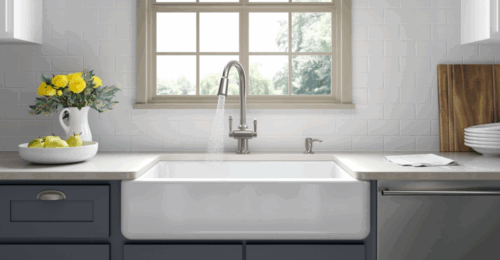The allure of diving into a home improvement project is undeniable. Whether you’re transforming an outdated bathroom into a modern, spa-like retreat or crafting a cozy patio space, the possibilities are endless!
However, amid the renovation euphoria, there’s an often-overlooked aspect: All the waste that home improvement projects can generate. From unused materials to discarded packaging, the carbon footprint of home makeovers can be considerable. In fact, 35% of all landfill waste is estimated to be from construction and renovation materials. But you don’t have to cancel your plans just yet. With intentional planning and a keen eye for sustainability, you can embark on a thoughtful remodeling journey. Let’s find out how!
Tips to Reduce Waste During Home Improvement
Precision Is Key
Remember the old carpenter’s saying, “measure twice, cut once”? This mantra isn’t just about accuracy, it’s about sustainability. Incorrect measurements often result in over-purchasing, which wastes both materials and money. For measurements, tools like The Home Depot’s project calculators can be invaluable. These digital aides help you determine the exact amount of materials you require, often with remarkable precision. While it’s wise to account for potential mistakes and buy a few extras, you’ll be confident in knowing just how much is too much.
Transform, Donate or Sell Leftovers
If you find yourself with surplus materials, consider these avenues before you toss anything:

- Donate: Organizations such as Habitat for Humanity can repurpose items like furniture, appliances, doors, paint, tiles and more. They even have ReStores that can take your items. If this isn’t an option for you, there are plenty of cities and other organizations you can donate to. By donating, you’re not only freeing up your space, but also contributing to a noble cause and promoting a circular economy.
- Reuse: Some items have hidden potential. Cabinets can become window seats and added storage, and old countertops might find new purpose as garden stepping stones.
- Sell: Materials like scrap metal can be valuable. Why not recover some costs by selling them? You can also offer items up for sale on platforms like Facebook Marketplace and Nextdoor.
Need more suggestions? Check out the EPA’s guide to reducing, reusing and recycling construction materials.
The Magic of Upcycling
Before you decide to part with a piece of furniture or fixture, ponder its potential. Sometimes, all it takes is a splash of vibrant paint, a touch of stain or even decorative overlays to breathe new life into a piece. This approach is not just sustainable, it’s wallet-friendly and can give you an opportunity to let your creativity shine.
Responsible Disposal of Chemicals
Safety and sustainability should always go hand in hand. While certain supplies like paint might be worth keeping for future touch-ups, others like turpentine and sealants can be harmful, especially in households with young ones or pets. Ensure that these chemicals are stored with utmost caution, preferably in a dry, dark, well-ventilated area away from regularly accessed areas in your home. Be sure that there are no leaks, and that these chemicals are in childproof containers. When it’s time to discard, consult local guidelines or recycling centers to ensure safe and responsible disposal.
Home improvement is a journey of transformation, but it’s also a great way to show our commitment to the environment. By embracing the strategies mentioned above, every homeowner can strike a harmonious balance between achieving their dream home and nurturing our planet. Remember, every sustainable choice, no matter how small, paves the way for a better tomorrow for all. Happy renovating!






